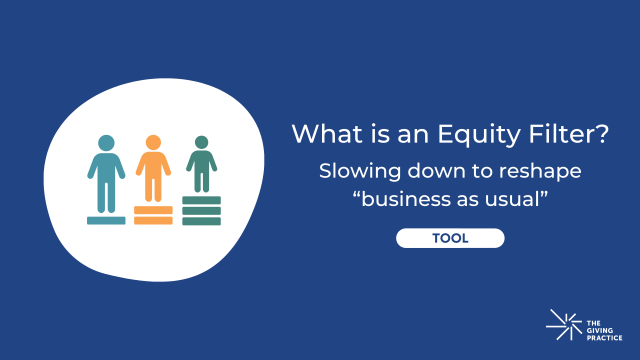
Ever since we started this project I’ve wanted to interview Darren Walker because I admire his fusion of intellect and energy. I have wondered what tools and skills help him mobilize and manage these strengths as well as handle the inevitable struggles that come with the job. For all of us, our strengths have a flip side, and in challenging situations that’s often where true leadership lies. Being attentive to what needs to be managed in ourselves implies showing vulnerability as a leader. It’s something not usually discussed, but Darren does here. — Jan Jaffe
Jan Jaffe: Darren, how do you deal with vulnerability in your work?
Darren Walker: In these moments at work when there is a heightened sense of vulnerability and emotion, my immediate response is to stop and not get caught up in the conflagration of whatever is triggered: rage, anger or frustration. We’ve all had personal and professional experiences that remind us of the imprudence of reacting in the moment.
Jan: Would you tell me more about the journey that led you to that insight? What would you share with emergent leaders in our field about learning to navigate your reactions in challenging moments?
Darren: I’ve been in many experiences when I’m the only person of color or only queer person in the room and I experience something that is deeply offensive. When people make blatantly homophobic, racist or sexist comments, it’s critical to respond and engage. You frontally take on what you heard. How you do it requires some reflection about the high road and low road. For me, I’ve decided never to ascribe an evil intention even though I know that some comments were evil-intended. I choose to take the high road in order to engage: I’m sure I didn’t hear you right. I can’t imagine that what you said meant to be… Most often it gave the other person a chance to recalibrate what they said or did.
Jan: What did it feel like to choose a vulnerable position of pausing to ask someone what they meant when you didn’t know what the outcome of that conversation might be?
Darren: I wanted to project power and confidence in order to be seen as competent. That is important. The paradox is that part of leadership in any situation is being confident about what you know and what you don’t know and being comfortable about projecting both. By modeling my own vulnerability, I hope others can be vulnerable as well.
Jan: We’ve been talking about situational leadership in a challenging situation. Could we talk about leadership inside an organization when you are the boss? Everyone is watching you as the leader of the organization. How do you signal that you want both reflection and movement with your staff or the Foundation board?
Darren: One thing I’ve tried to do is be clear that I am focusing on a shared task like the future of the organization versus my own future.
Jan: I like your emphasis on a shared task – something that is bigger than any one person or program. That focus alone invites reflection on practice with less defensiveness perhaps?
Darren: When you are leading an organization, it is critical to learn the inherent wisdom that is part of the culture of the place. That is why I started here by asking a lot of questions about our history, interrogating what we’ve done well. It’s in the water and should not be ignored. Making the practices that worked in the past more explicit helped us be mindful about holding two important forces: stewardship and new action.
Jan: I love that metaphor of holding versus solving the conflicting forces of stewardship and new action. One is about conservation of what’s good and the other is diving into new territory. Both are critical to healthy growth. Some organizational theorists call that managing a creative tension where there is right on both sides. Of course, we’re all drawn to one pole more than the other. What about you? How do you manage the draw to conservation over action or vice versa in yourself? What practices do you use in groups to hold that tension?
Darren: I’m aware that I’m drawn to generating ideas and making them happen. That’s not a bad thing! If something looks like it is really transformative and we have the resources, I want to make it happen. That is both my strength and weakness. I’ve had to learn to be more consultative than decisive when I’m in a generative situation. Before agreeing to the next step, I try to pause and say let me talk to people internally, get their sense of this. I’m mindful that as president my actions can implicate a lot of things. We have to modulate the work so people are not so overwhelmed that they can’t do the work.
Jan: I’m laughing because I wish someone had reminded me of this rule of consulting before acting as a program officer. I often got so enthused about a generative conversation outside the Foundation that I forgot to bring in my colleagues first to get to a yes. Sometimes grant applicants had to share that rude awakening with me and I felt very bad about that.
Darren: One moment that comes to mind for me when I felt this tension between enthusiasm and consultation was during a retreat with Foundation senior staff to take stock of what we’re learning. I came in very excited about a new idea from conversations with an innovator who is also a funder in one of the fields we care about. “Why can’t we do this?”
Jan: How did this work at the retreat?
Darren: We were working all day assembling and curating a go-forward agenda. There were flip charts and Post-Its with ideas and To Dos everywhere. I felt exhilarated and ready to embrace it. One of our senior officers suddenly asked, “Can we stop? We can’t do all of this.” I have learned from 360-degree feedback to invite my team to push back. “I really mean it, people.” I asked, “Anyone else think this?” “Yes!” Then, okay, let’s have a conversation about what should be taken off the wall. Let’s give ourselves the time to develop a deeper, more reflective sense of what it will take to do that. I try to respond to push back by saying “thank you.” I appreciate it. I want people to be comfortable knowing that we allow each other space to raise objections.
Jan: How did it feel to do that?
Darren: At first I felt depleted and dejected. As the champion of the plan, it was initially dispiriting to hear that. At the same time, as the leader, I recognized that one of my colleagues felt comfortable challenging me and that is something I want to happen. And I didn’t want this person to feel isolated in their vulnerability for taking the risk. When I asked others how they felt, I gave them the freedom to push back for what was right for their teams and in the end, I think it was the right decision for the organization.
As a leader, in order to get the job done, I have to be comfortable being vulnerable, which means knowing that being president isn’t enough to do something because I say it. I have to signal all the time that I’m open to a real discussion about how we get things done.
For more information about Reflective Practices, please click here.



